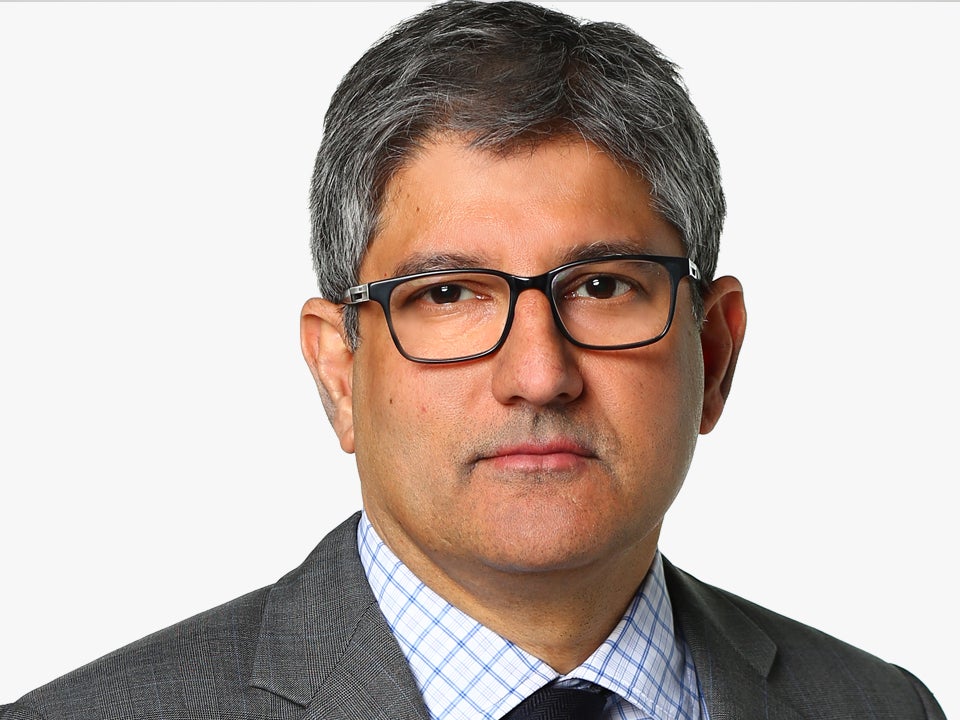

Introducing the Invesco Emerging Markets Local Debt Fund
Target income generation and long-term growth, while gaining exposure to the diversification benefits and relative yield enhancement offered by emerging markets.
See all product detailsSeeking yield opportunities in emerging markets
Historically, emerging market local bonds have provided attractive relative yields and access to strong developing market sovereign balance sheets. We harness manager skill, attempting to outperform the market while simultaneously minimising the downside risk associated with this asset class.
Why this fund?
No market or region can be viewed in isolation. Issues like trade and international relations must be taken into consideration. That’s why we combine top-down macro analysis with bottom-up country research.
We develop our macroeconomic outlook and incorporate the robust linkages between developed and emerging market economies to better inform our global perspective.
We then allocate risk based on this macroeconomic outlook over a 9-18 month investment horizon across interest rates and foreign currencies.
We believe that, given the relative volatility of the asset class, an asymmetric approach to risk management and budgeting can provide investors with an overall smoother investment experience over time.
We look to reduce volatility throughout the emerging market cycle. As such, on an ex-ante basis, we do not allocate more risk (volatility) than that of the reference benchmark while deploying the following loss-mitigation strategy:
- Maintaining a low tracking error and high volatility in risk-on periods.
- Maintaining a high tracking error and low volatility in risk-off periods.
As fiduciaries, we incorporate ESG factors into the investment process, because we believe it is an important risk management tool in emerging markets.
To better understand ESG factors, we employ a qualitative and quantitative framework, carry out research trips, and engage directly with local experts. These include policymakers, senior government officials, central bank representatives, state administrators, politicians, non-governmental organisations, and private sector representatives.
Position sizing is adjusted taking ESG factors into consideration, assuming financial metrics and valuations support the stated investment thesis.
ESG risks are also considered and actively managed, and the fund is classified as Article 8 under the Sustainable Finance Disclosure Regulation (SFDR). The investment concerns the acquisition of units in an actively managed fund and not in a given underlying asset. Any investment decision should take into account all the characteristics of the fund as described in the legal documents. For sustainability related aspects, please refer to https://www.invescomanagementcompany.lu.
Investment risks
-
For complete information on risks, refer to the legal documents. The value of investments and any income will fluctuate. This may partly be the result of exchange rate fluctuations. Investors may not get back the full amount invested. Debt instruments are exposed to credit risk which is the ability of the borrower to repay the interest and capital on the redemption date. Changes in interest rates will result in fluctuations in the value of the fund. The fund uses derivatives (complex instruments) for investment purposes. This may result in the fund being significantly leveraged and could cause large fluctuations in the value of the fund. As a large portion of the fund is invested in less developed countries, you should be prepared to accept significantly large fluctuations in the value of the fund. The fund may invest in certain securities listed in China. This can involve significant regulatory constraints that may affect the liquidity and/or the investment performance of the fund. Investments in debt instruments which are of lower credit quality may result in large fluctuations in the value of the fund. The fund may invest in distressed securities which carry a significant risk of capital loss.
Meet the team
Hemant Baijal and Wim Vandenhoeck are responsible for managing the fund. They are members of our Global Debt Team, based in New York. The team’s eleven investment professionals come from a diverse range of international backgrounds, with fluency in nearly 15 languages and a wealth of experience, with an average 23 years of investment experience and eleven years with Invesco.

We believe that emerging markets local currency debt features differentiated alpha and income generation potential with meaningful client portfolio diversification benefits.
Related products
FAQs
We see a favorable backdrop for emerging market local debt, as continued monetary easing by the US Federal Reserve enables further easing by emerging market central banks, in turn boosting their domestic growth. Nominal and real interest rates have remained elevated in emerging markets, while disinflation has generally continued – offering attractive interest rate differentials versus developed markets.
In addition, diverging growth and inflation dynamics across individual countries offer compelling total return opportunities. We remain focused on countries with higher nominal growth, such as India and Malaysia, which have experienced significant economic growth due to higher export activity and resilient domestic spending. The biggest opportunity we see is in the normalization of yield curves globally.
While key risks include volatility around US policy uncertainty and potential currency impacts, this is amidst a positive external environment of loosening monetary policy globally, the prospect of additional stimulus from China, and lower oil prices. Overall, we see a promising opportunity set ripe for generating alpha.
Emerging market debt is fixed income debt that is issued by countries with developing economies as well as by corporations within those nations, issued in either a local or hard currency.
Local currency bonds are debt securities issued by sovereigns or corporates in their local currency. The return drivers come from local yields, capital appreciation (changes in yield curve or credit standing) and FX. Since countries can be at different stages in the economic cycle, interest rates and returns can be uncorrelated to those in developed markets. Given continued growth, local currency bonds tend to be more liquid than hard currency bonds and the list of markets with investible/liquid local bond markets that are accessible to foreign investors continues to increase.
Hard currency bonds are debt securities issued by sovereigns or corporates in other currencies – usually in a developed market currency, such as the USD or euro. Many lower income, weaker developing countries, “frontier markets” are incentivized to issue in hard currency to attract foreign investment (perceived as less risky if issued as a USD or euro asset) versus issuing in their local currency.
Investing in emerging market local currency debt offers:
- Higher Yields: Generally higher income than developed market bonds.
- Diversification: Lower correlation with other asset classes.
- Currency Gains: Potential for currency appreciation.
- Inflation Hedge: Bonds may be inflation-linked and adjust accordingly.
- Growth Exposure: Access to the attractive growth dynamics typically associated with emerging economies.
However, be aware of higher risks like currency volatility and political uncertainty. Active management is key.
Explore the team's latest insights

Fixed Income Emerging market local debt | Monthly macro insights
Each month, our experts share their views on the emerging market (EM) local debt asset class. Read their outlook and discover which markets they believe are presenting the most attractive opportunities.

Fixed Income Monthly fixed income ETF update
Bond markets struggled in March, primarily due to concerns about the potential impact of upcoming US policies. Read our latest thoughts on how fixed income markets fared during the month and what we think you should be looking out for in the near term.

Fixed Income Global Fixed Income Strategy Monthly Report
In our regularly updated macroeconomic analysis we offer an outlook for interest rates and currencies – and look at which fixed income assets are favoured across a range of market environments.
Important Information
-
Data as at 31.10.2024, unless otherwise stated. This is marketing material and not financial advice. It is not intended as a recommendation to buy or sell any particular asset class, security or strategy. Regulatory requirements that require impartiality of investment/investment strategy recommendations are therefore not applicable nor are any prohibitions to trade before publication. Views and opinions are based on current market conditions and are subject to change. For information on our funds and the relevant risks, refer to the Key Information Documents/Key Investor Information Documents (local languages) and Prospectus (English, French, German, Spanish, Italian), and the financial reports, available from www.invesco.eu. A summary of investor rights is available in English from www.invescomanagementcompany.lu. The management company may terminate marketing arrangements. Not all share classes of this fund may be available for public sale in all jurisdictions and not all share classes are the same nor do they necessarily suit every investor.
EMEA4034314/2024


How can we help?
Let us know using this form and one of our specialist team will quickly get back to you.

